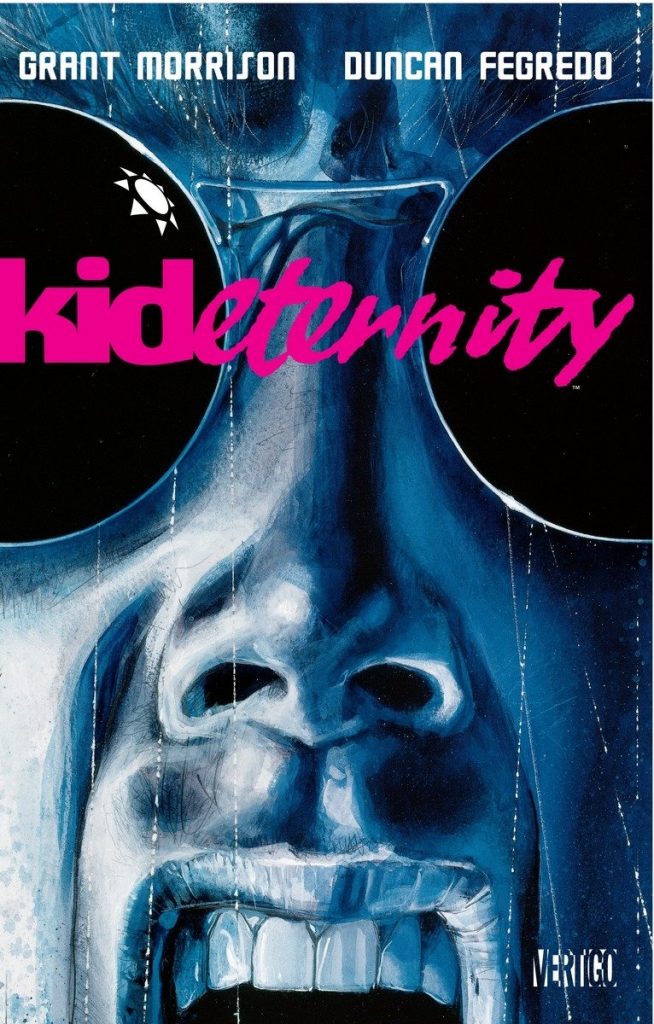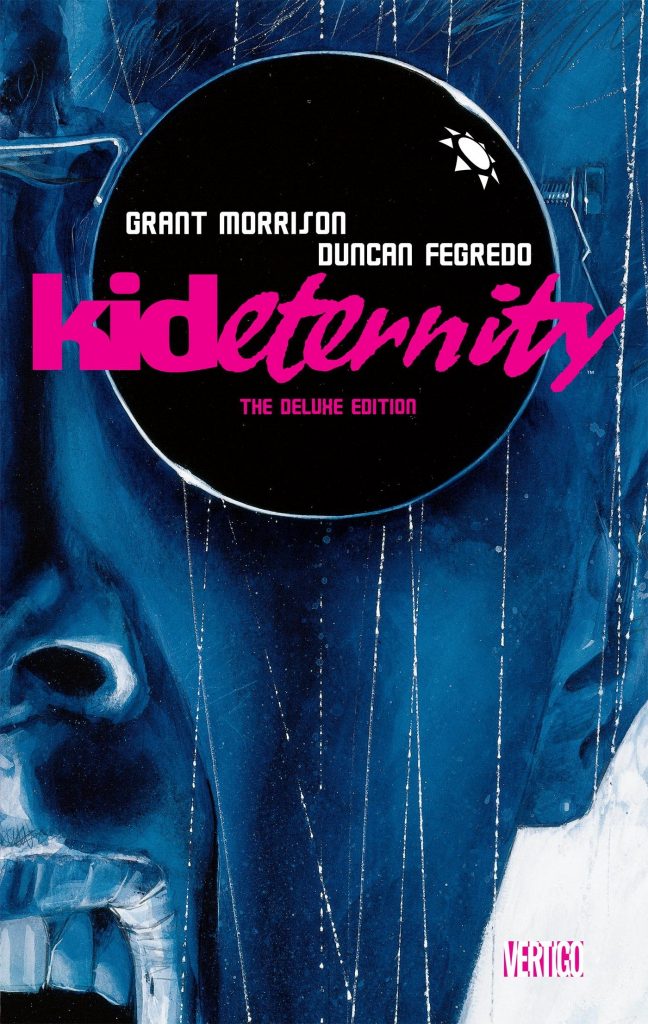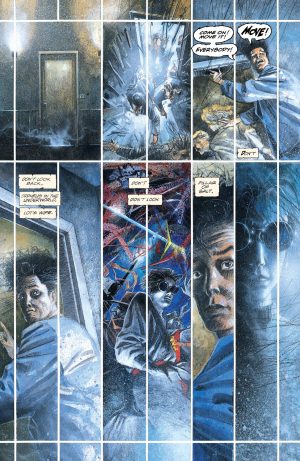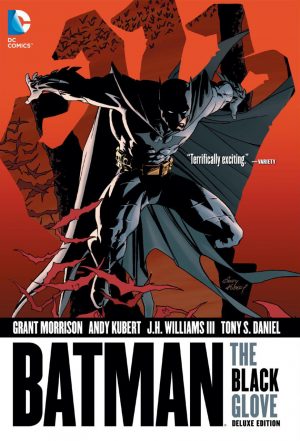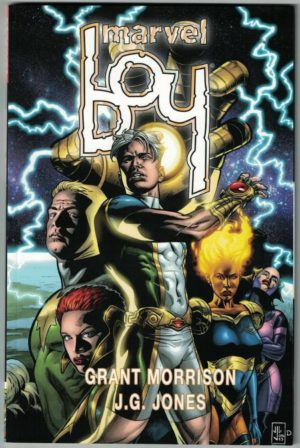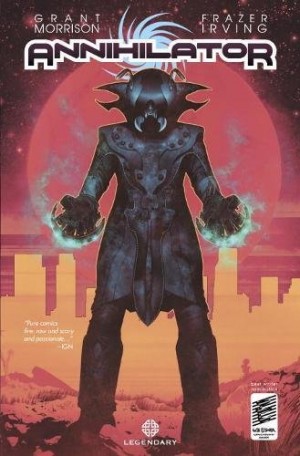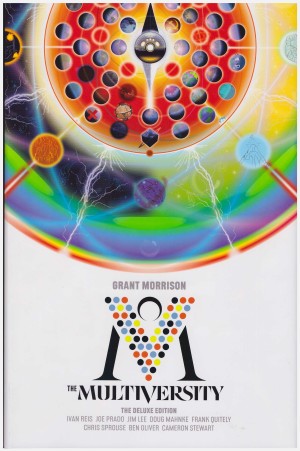Review by Karl Verhoven
On the basis of Kid Eternity it might be assumed that instead of being a consistently interesting conceptual creator, Grant Morrison conned his way into DC back in the early 1990s because no-one would call him out on comics that made no sense. Hey, if you can’t understand it, it’s got to be deep, right? Not always.
“I turned myself into a thought and escaped in your head” supplies the gist of a deliberately disjointed first thirty pages, stringing together repeated themes, words and symbols that may or not be connected as the artiste formerly known as Kid Eternity manifests. It takes another fifteen pages to discover we’ve been experiencing dying comedian Jerry Sullivan’s life flashing before his eyes, which is prioritising technique over substance, and it doesn’t reward the time spent reading through the disconnected ramblings. Their sum total reveals Kid Eternity’s been in Hell, he’s escaped, and there’s a threat to Jerry.
However, time hasn’t completely been wasted because we have the compelling accompaniment of Duncan Fegredo’s art. The images he clashes together are presumably under Morrison’s instruction, as text and art are more intimately connected than on many graphic novels, but repeated instances occur of the eye being stopped on its journey, lingering on an elegantly composed drawing. There are so many. The man formerly known as Kid Eternity himself is attention-grabbing, his white turtleneck and blind man’s shades striking, but the eye lands equally on an immaculately rendered steamboat in silhouette, a scratchy portrait of a guy looking back at the reader or a tribal dancer at the edge of a cliff. Fegredo’s then challenged by the personifications of universal forces beyond the power of humanity to comprehend, but who can draw that in any way that makes sense? He settles for fleshy lumps with randomly placed eyes.
Once the first chapter’s showing off is out of his system, Morrison continues to move through Jerry’s past as he works his way to hell. The arch and knowing former Kid Eternity applies cynicism as a weapon as he moulds Jerry to his needs while Morrison rips the piss out of Lovecraftian demons droning on about the barriers between the subjective and objective crumbling. Read some of those lines out loud. They’d sure give Jerry’s comedy career a boost. We’re treated to symbolic doorways to hell, diversions into thoughts about the afterlife and friend of a friend folktales while Jerry is confronted with his past sins. And so on. And so forth. It’s not aged well. With the blessing of hindsight Kid Eternity is a prototype of the sort of story Morrison would master, providing greater existential contemplations about chaos and order, although very few using horror as a vehicle. Anyone able to work such themes into Batman has to be admired, but Kid Eternity’s saving grace is Fegredo, not the jumbled thoughts released from Morrison’s internal attic. The 1940s superhero Kid Eternity who summoned figures from history to help him fight crime is a bonkers idea, but more interesting than this. Hardcover Deluxe Edition? They’ve seen you coming.
This review was created without once using derivations of the words ‘surreal’ or ‘metaphysical’, although ‘existential’ seems to have materialised. Sorry about that. You’ve been a great audience. Thank you very much and goodnight.
